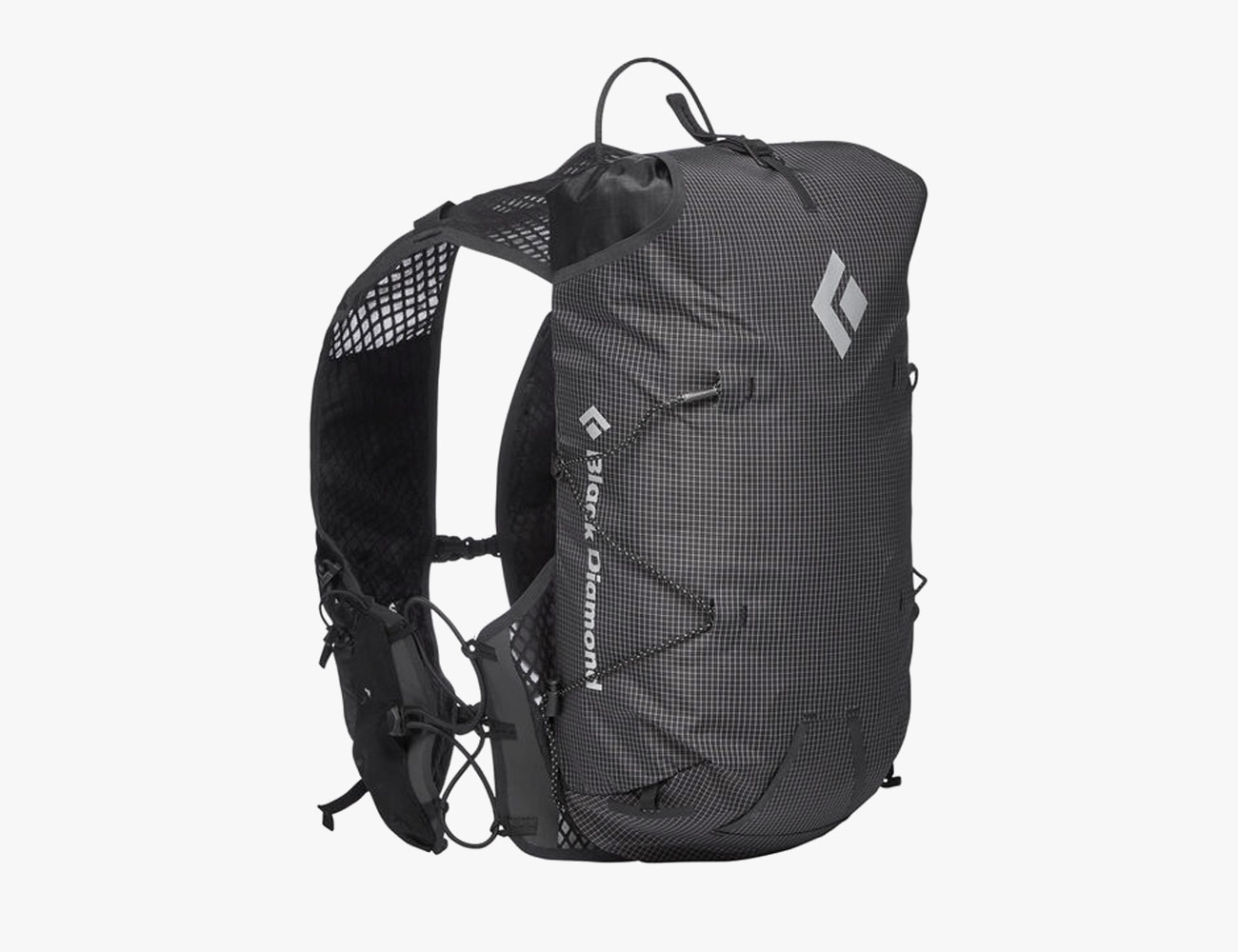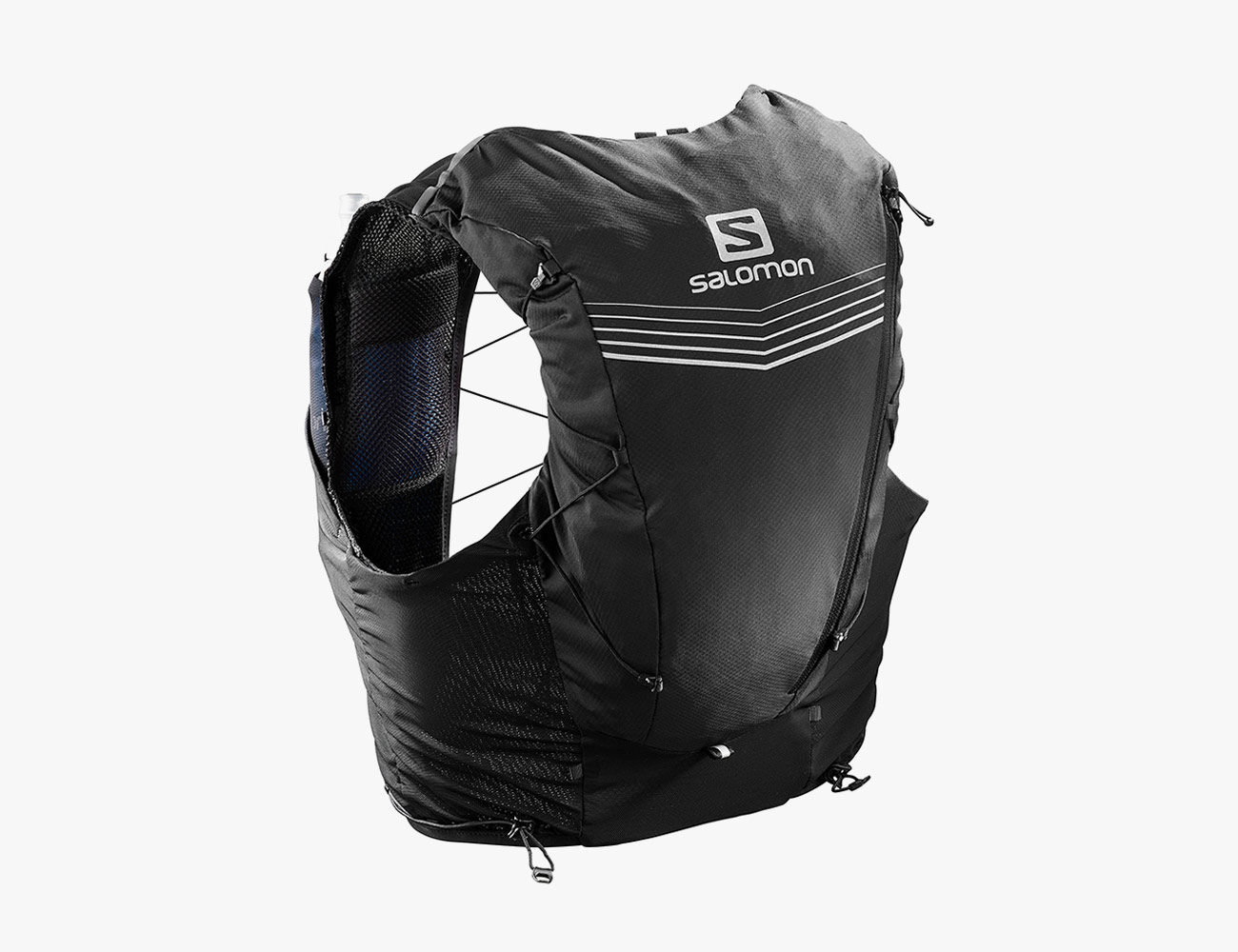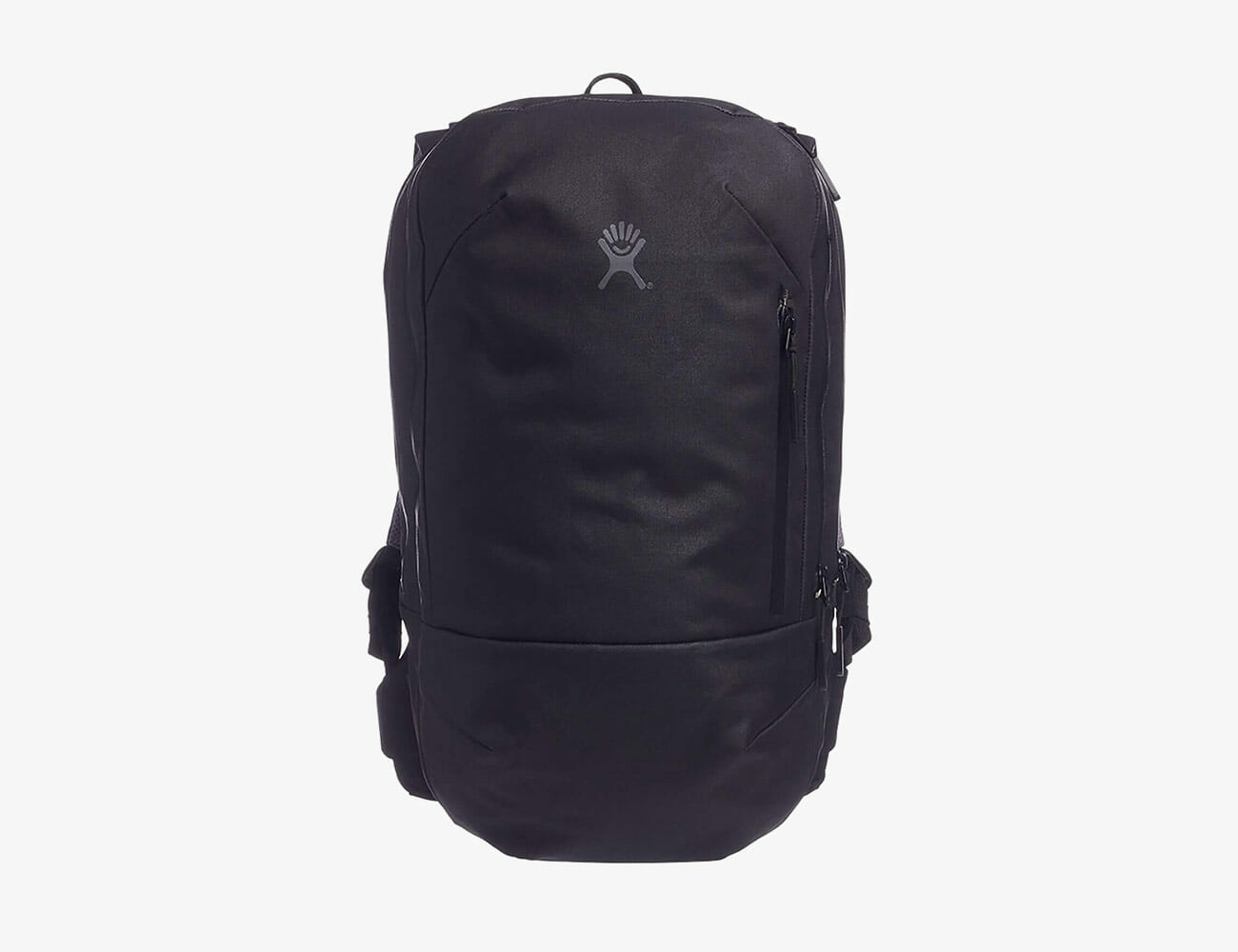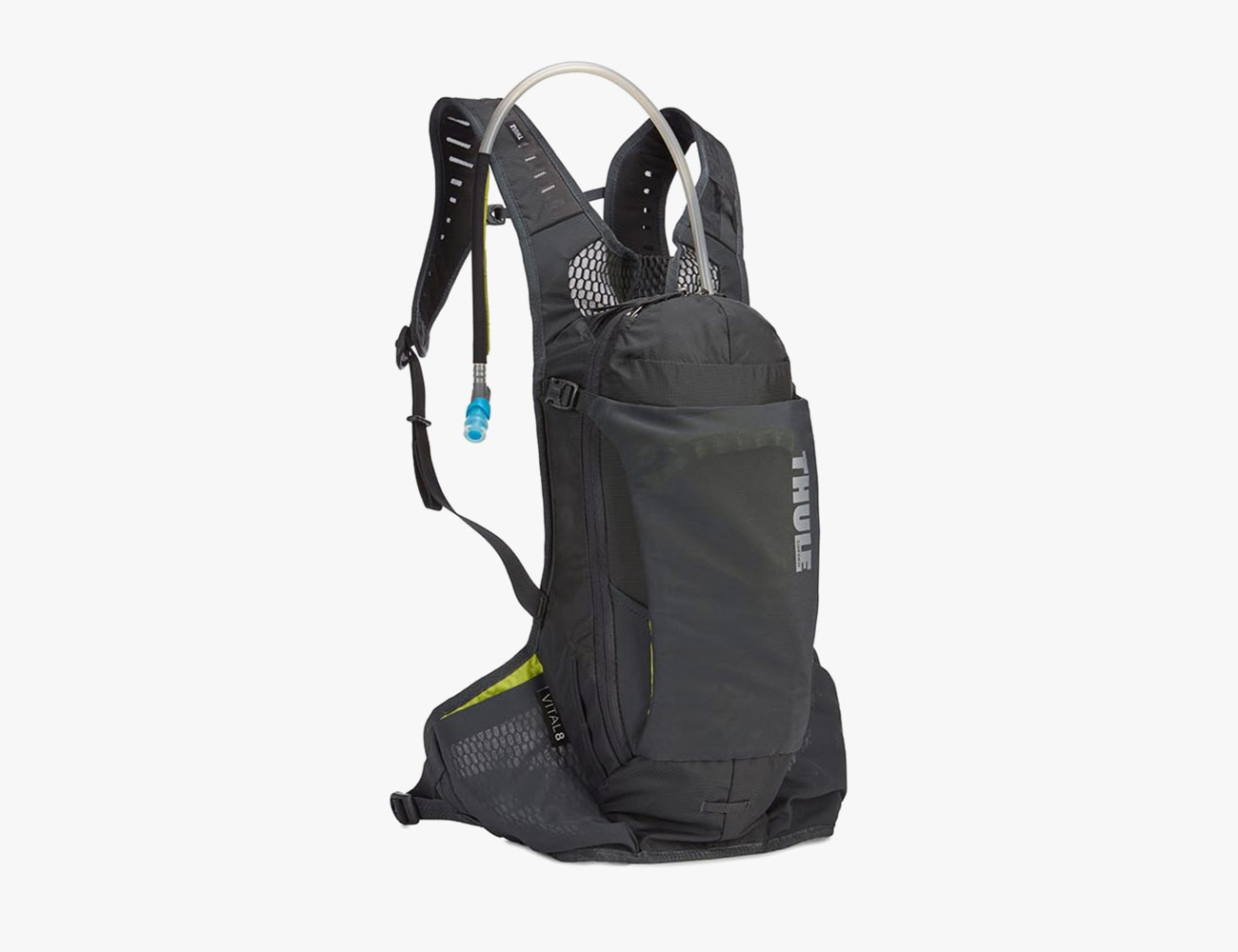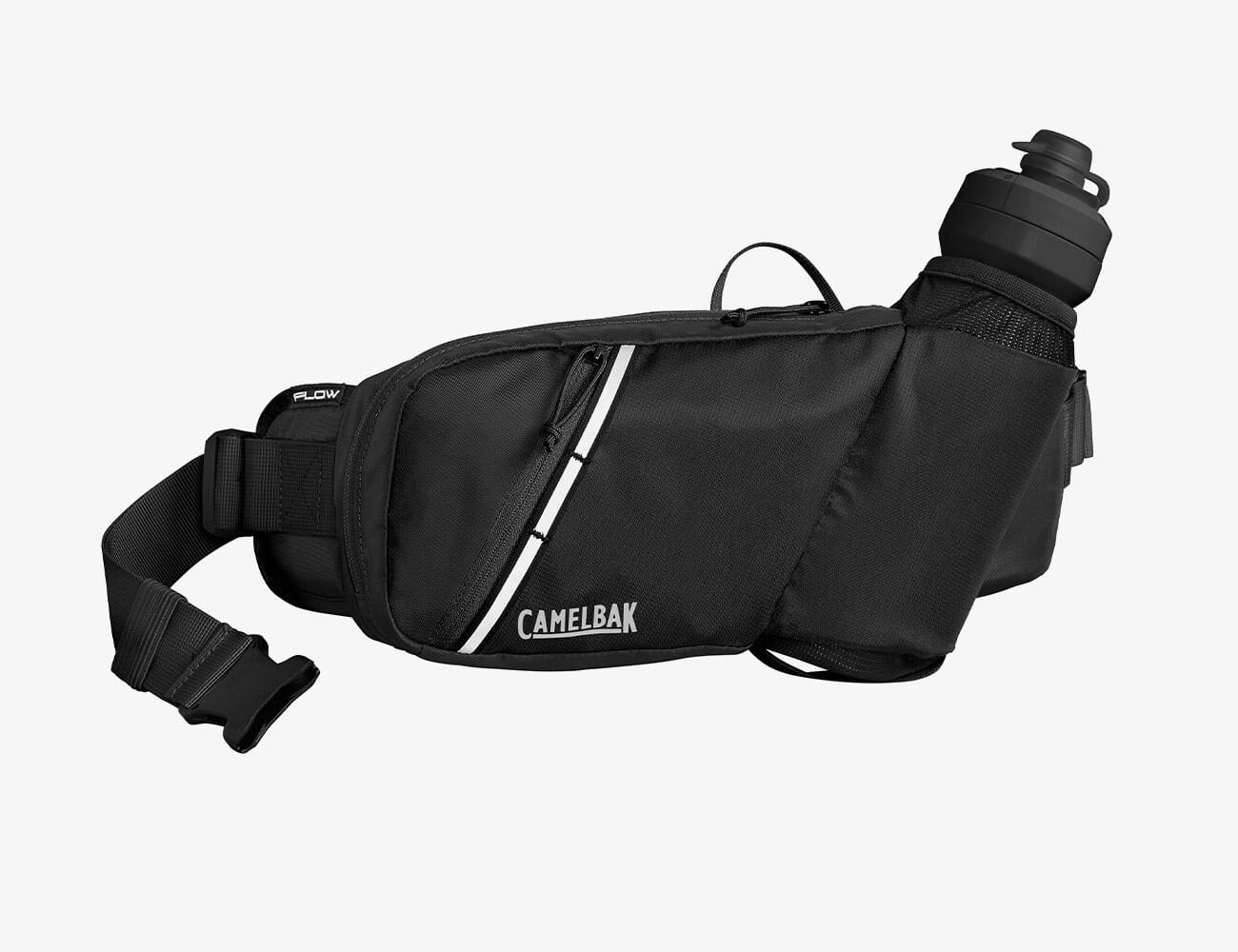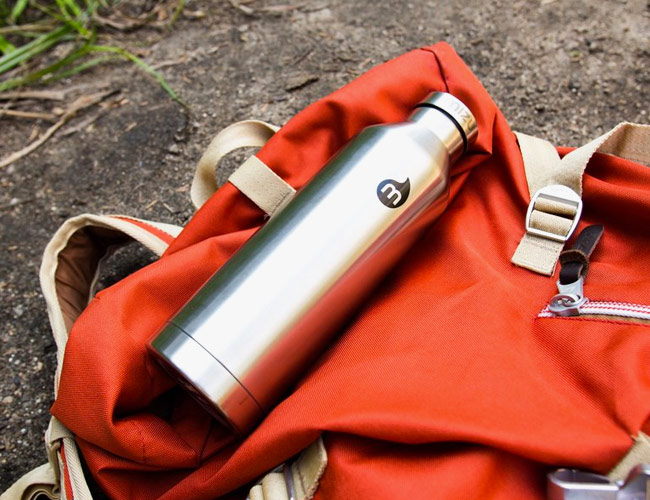Hydration backpacks are more than a trend. Humans are 60 percent water, and when it’s hot and/or humid, you need to continuously replace the fluid you’re sweating out. A hydration pack lets you drink without interrupting your flow, whether you’re running an ultra or jamming through a music marathon.
“People want to be more self-sufficient, to go on hikes, bikes and runs being able to drink on the move, hands-free, with the ability to toss in a jacket and snacks with the thing you’re already carrying,” notes Ren Walkenhorst, Associate Product Manager at Hydrapak. “Hydration packs make it easier and more efficient,”
Hydration packs are ideal for activities where you want frequent access to a sip, slurp or guzzle of water or sports drink, without carrying a bottle in your hand, or taking off your pack to drink. They also have storage for other gear you need on your hike, bike, run or other adventure.
Packs come in vest, backpack and hip pack styles, with many sizes and features to choose from. “Where there’s a lot of movement, a pack’s ability to stay stable and stabilize the liquid inside is key,” says Mike Valvano, director of Soft Goods and Sport at Camelbak. Consider the questions and options below to find the one that’s right for you.
How much water do you need?
Water is heavy, and carrying a lot more than you need can slow you down, but it’s important to be realistic. Hydration reservoirs typically range from 0.5 to 3 liters. During strenuous activity, it’s recommended to drink a liter an hour. Pick a pack with a reservoir that will accommodate the length of your typical outing.
What else do you need to carry?
Besides water, you may need space for cargo, like a jacket, trekking poles, snacks, first aid or bivy. Buy a bag with the capacity to hold your kit. Overstuffed, even the best pack can feel like a sausage on your back. Choose a pack that fits your gear comfortably, and if you plan to be heavily loaded, pick one with suspension, including a broad hip belt and possibly a frame. Sport-specific gear, like a helmet or trekking poles, requires specific attachments — buy one made for the sport or activity you do most frequently.
How does the pack fit loaded?
If you’re running any significant distance in your pack, make sure it doesn’t bounce or chafe on the trail. Check pack fit in the store. Adjustability is critical, as is enough structure to keep the load you’ll carry from bouncing around.
What else do you need to grab on the go?
Mountain bikers might want access to a multitool and snacks without taking the pack off. A runner might need multiple handheld flasks and instant access to a gel or sunglasses storage. If you have an XL iPhone and you want to be able to reach it, look for a pack with a pocket big and easy to get to. Many packs have pockets on the shoulders, chest and hips that are accessible while you’re wearing them.
How often should you empty and clean your hydration reservoir?
It’s easy to drop your pack at the end of an adventure and forget about it until the next one. But hydration reservoirs get moldy fast, particularly if you had drink mix inside. Wash and dry your reservoir after every use. And hand wash your empty pack or throw it into the washing machine on delicate for periodic cleaning.
Black Diamond Distance 8-Pack
Best Hydration Pack for Fast and Light Mountain Scrambling
Made from ripstop fabric that’s 10 times stronger than steel, but so light it floats in water, this vest-style pack is durable enough to be scraped on rocky outcroppings, and to survive abrasion during boulder scrambles. Rib cage and chest straps keep the pack close to your body, even with ice axes, trekking poles and a liter of water in two soft flasks or water in a bladder on your back. Main pocket access is speedy — it’s held shut with a single clip.
Salomon Advanced Skin 12 Set
Best Hydration Pack for Ultras
Ultrarunner Aliza LaPierre does 90 percent of her races with Salomon’s Advanced Skin 12 Set, from the UTMB to Western States.“The pack hugs me in all the right places, and has adjustment points so I can really dial in the fit for a chafe-free run,” she says. “Stretch pockets on the front give me quick access to my nutrition, and then the large zippered storage in the back lets me carry an emergency blanket and a jacket, without my gear bouncing around on the trail.” The pack lets runners really personalize the fit. An insulated sleeve is bladder-compatible, and it comes with a soft flask, too. Side compression laces are adjustable without removal. And there are half a dozen other stretch pockets plus the main compartment to carry gear, snacks, an emergency kit and electronics. Loops hold poles as well as a clip-on light.
Nathan Speed 2L Hydration Vest
Best Hydration Pack for Urban Running
At 3.6 ounces, this is one of the most minimalist packs available, best suited for a pre-or post-work run where you don’t need much gear or water. The mostly mesh vest fits like an ultra-breathable shirt, with enough compression to stabilize a light load. A 12-ounce soft flask with a straw tube tucks into one of the four front pockets for drinking on the go. The others store nutrition and your phone, while the back pocket has a key clip. When you’re pushing the limits of daylight, reflective trim keeps you visible.
Hydroflask Journey 20 L Hydration Pack
Best Hydration Pack for Music Festivals
With enough storage space to store everything from sunscreen to blankets to clothing and lunch, this pack also boasts an oversized reflective neoprene pocket that keeps water in the 3-liter reservoir cold for up to four hours. Separate storage compartments keep water and food apart from clothes and gear. The weather-resistant pack sits off the harness allowing airflow to keep you cool. And the main compartment is big enough to hold a 13” laptop, so this pack is just as functional when the party is over.
Thule Vital 8 L
Best Hydration Pack for Mountain Biking
When you’re mountain biking, a flapping, swinging hydration hose is annoying. A magnet in Thule’s hose sleeve prevents that distracting motion — let go of the hose and it auto attaches to the shoulder strap. Jersey-style pockets give this pack a vest-like feel, as well as quick access to your phone, snacks and tools without taking it off. Even with the 2.5-liter reservoir full and the pack loaded, the weight sits low on the body to reduce muscle strain and enhance upper back and shoulder cooling.
Evoc FR Enduro
Best Hydration Pack for Big Mountain Biking
Over intense terrain, riders wear pads to protect knees and elbows. Don this pack, and you’ll also protect your back. The flexible, temperature-impervious honeycomb back protector absorbs 95 percent impact energy in a crash to save your spine. It makes the pack somewhat heavy — around 2.3 pounds — but it detaches with toggles for less extreme outings. This 16-liter pack is big enough for backcountry adventures where you’ll need extra clothes, lots of water and multiple meals or gear to record the ride. With the back protector in place, this pack is protective enough to take to the downhill park. A rain cover stashes in a bottom zipper to keep contents dry in a downpour.
Osprey Savu
Best Hydration Pack for Day Hikes
Hip packs are all the rage, but most don’t carry enough water for trail adventures. This one does. Sleeves on both sides secure a bike-style or wide-mouth bottle — a snap adjusts the opening, and a cord wraps the top so bottles don’t bounce out when you’re making technical moves or running on descents. A middle pouch is big enough for a lightweight jacket, sandwich, car keys and phone, with a separate scratch-free pocket for sunglasses. Side pockets keep snacks in easy reach. And this is the first hip pack that didn’t slide down our butts when we were scrambling. The pack is designed for ventilation with a ridged lumbar panel and well-vented hip belt.
Camelbak Podium Flow Belt
Best Hydration Pack for Everyday Use
Never be caught without water with Camelbak’s newest hydration hip pack. We tested this pack lapping our local MTB trails — its intended use. The 20-ounce dirt-protected, high-flow bottle stayed put in its elastic sleeve even hitting jumps, and the two-liter pouch held a tool and phone. But this isn’t just a pack for riding. We grabbed it all summer long for everything from dog walks to lake walks to blueberry picking, avoiding dehydration headaches and always having wallet, ID and sunscreen on hand.
The Best Water Bottles of Every Type
Since Nalgene began rebranding its scientific containers for outdoor use in the 1970s, the water bottle has taken a firm place as an essential item for everyday life. Here we examine the best bottle of every type, from plastic to insulated. Read the Story

